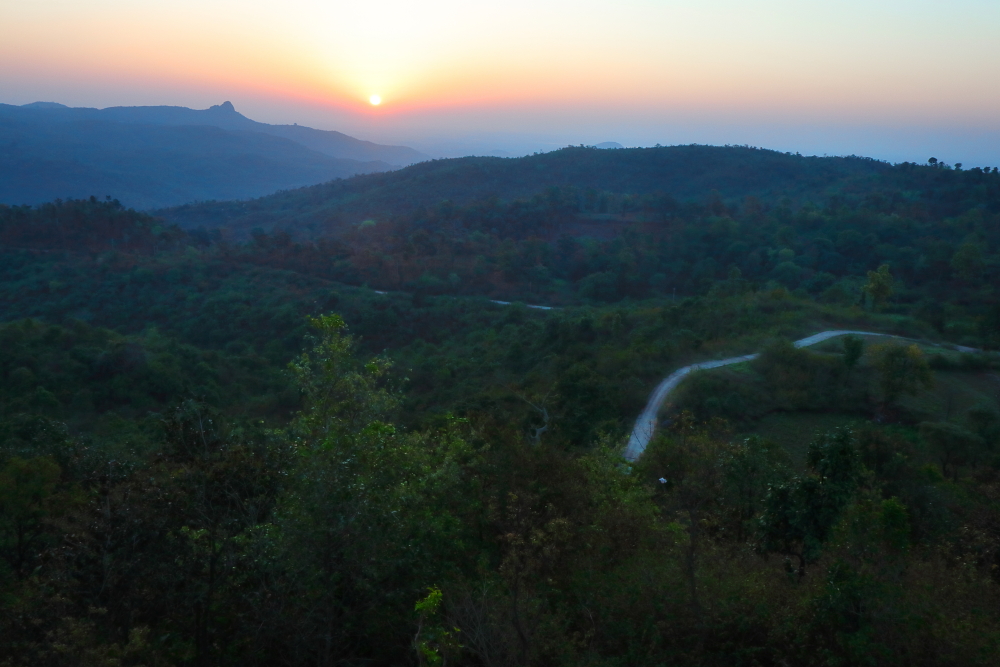Purulia, the westernmost district of West Bengal, is a land of red soil, Chau Dance and red blooms of Palash. Lush green landscape with occasional stretches of rocky and undulating terrain, rustic charm of the countryside and the purity of ingenious tribal life make Purulia a perfect tourist destination for weary city dwellers. Ayodhya Hills (Bengali: অযোধ্যা পাহাড়), an L-shaped stretch of rolling hillocks covered with dense forest, is one of the most visited places in Purulia. Once what was one of the most remote areas of the state is now one of the most sought out travel destinations of Bengal.
In this article, I will write a 3-day itinerary for Ayodhya Pahar, the places to see in Ayodhya Hills, the best time to visit, accommodation options and driving route from Kolkata and more essential information.
Pin this image to save the link and read the post later!!

Table of Contents
About Ayodhya Hills (অযোধ্যা পাহাড়) in Purulia
Ayodhya Hills in Purulia is a part of the Dalma Hills range and is the easternmost part of Chhotanagpur Plateau. The area of Ayodhya Pahar is 320 sq. km area spreading across four blocks (Arsha, Jhalda, Baghmundi and Balarampur) in the Purulia district. The word “Ayodhya” (locally called Ajodhya) came from a Dravidian Word ‘Ajhaida’ (Ajhai – Large, Da – Daha).
Hills are mostly covered with Sal and Segun forest, with other plants like Mahua, Palash, Kusum, Neem, Bel, etc. The forest is quite dense in some parts and home to many animals like deer, pig, fox and elephant.
Ayodhya Hills is a home for many tribal communities. Some of them are Santhal, Birhor, Munda and Bhumij tribes, who were great hunters once. But now agriculture is their main livelihood.
Ayodhya Hills range from a few hundred feet to 2800 ft. The highest peak of the Ayodhya Hill range is Gorgaburu (855 meters). In the Santhal language, the word “buru” denotes hill (Bengali: পাহাড়).
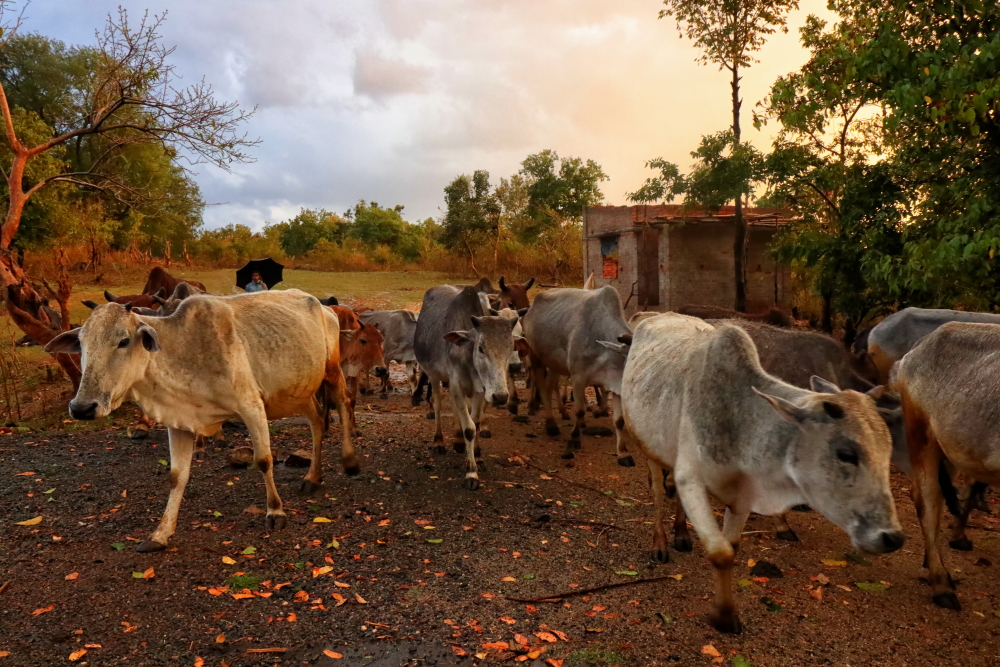
Read more: Why You Should Actually Visit Darjeeling in Monsoon
Ayodhya Hills in Purulia – Distance from cities
Purulia, the district headquarter, is the nearest major town of Ayodhya Pahar. It is 40 km from Ayodhya hilltop. Located at the border with Jharkhand, Ayodhya Hill is 84 and 110 km from Jamshedpur and Ranchi. Kolkata to Ayodhya Pahar distance is 320 kilometres.
Ayodhya Hills (অযোধ্যা পাহাড়), Purulia tour
An ideal itinerary to Ayodhya Hills in Purulia will be for 2Nights and 3Days. You can cover all the places in and around Ayodhya Pahar at that time. But one can customize according to the days available and extend the tour for 5 days to cover all tourist places in the Purulia district and nearby areas.
We went there from Kolkata, my hometown. I took leave on Monday to merge it with the weekend (Saturday and Sunday). We boarded a train from Howrah station on Friday night and returned to Kolkata on Tuesday early morning. We covered all the tourist places in the Ayodhya Hill circuit during our trip.

How to reach Ayodhya Hills from Purulia station
From Purulia station, Ayodhya Hilltop is around 40 km. It takes 2 hours by cab from Purulia station, or you can catch a bus from Purulia bus terminus and reach there in two and a half hours. The shortest road goes via Sirkabad, which is at the foothill of Ayodhya hill. There are another two roads to the hilltop – one is via Baghmundi and another one via Jhalda.
Places to see on your Trip to Ayodhya Hills (অযোধ্যা পাহাড়) in Purulia
A tour to Ayodhya Pahar circuit includes the following tourist places –
- Sita Kund
- Mayur Pahar
- Durga Bera/ Tarpania Lake/ Marble Lake
- Murguma Lake
- PPSP Dams
- Charidah village
- Khairabera Lake
- Matha Forest and Sonakupi village
- Pakhi Pahar
- Pardi dam
- Usuldungri Sunrise View Point
- Bamni Falls
- Turga Falls
- Deulghata Temple
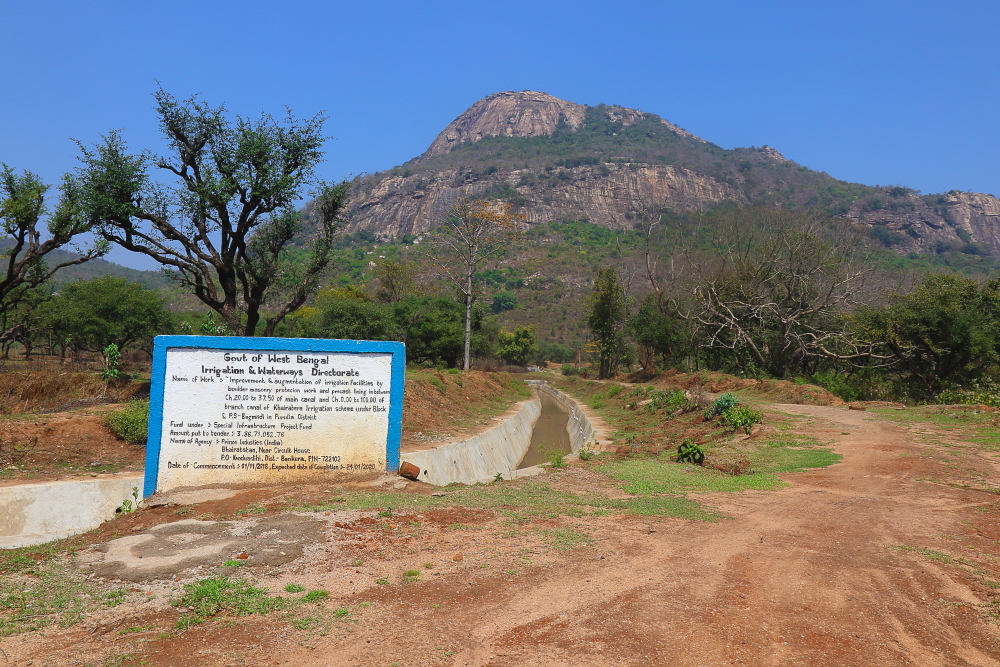
My Trip to Ayodhya Hills (অযোধ্যা পাহাড়) in purulia
Day 1
We reached Ayodhya hilltop around 10 in the morning. After checking in our resort, we rest for a couple of hours, followed by lunch. Around 2 pm, we headed towards Sita Kund, the first destination of our sightseeing tour.
Sita Kund
(Distance from Ajodhya hill top – 1 km)
Sita Kund (Bengali: সীতা কুন্ড) is a small shallow water body in Bagandi village where cold water bubbles from the white sand base. What makes this place more interesting is the mythological story attached to it.
The Kund was said to be created by Rama – The King when he pierced the earth soil crust with his arrow to create a fountain to quench his wife’s thirst, Sita. They came there during their exile, so this place is called Ayodhya Hills, as believed by some locals. The local people have constructed a small temple worshipping Rama just 500 meters away from the Sita Kund.
Every year in the Bengali month of Baisakh, during full moon hunting festival is held at the Ayodhya Hills. This festival is like a fair which is also locally called Disum Sendra (শিকার পরব). The local tribals believe that young boys attain adulthood during this festival. They drink water from Sita Kund before groups of young men set out for their hunting adventure.
Mayur Pahar
(Distance from Ajodhya hill top – 2 km)
Mayur Pahat (Peacock Hill) is 605 meter in height from sea level and offers a panoramic view of the entire region of Ayodhya hills. It is a popular picnic spot for locals and has a small temple at the hilltop.

Durga Bera / Tarpania Lake / Marble Lake
(Distance from Ajodhya hill top – 7 km)
Marble Lake was created by extracting hard rocks used to construct the PPSP dam. It is situated in Tarpania village and also called Tarpania Lake. You can see scattered rocks and boulders all around the lake.
One road goes towards the lake, and another goes up towards the hill from where you can get a panoramic view of the lake. You can spend some time in the small shacks in the parking lot and enjoy a cup of tea while having a chat with locals.

Murguma Lake
(Distance from Ajodhya hill top – 19 km)
Murguma Lake was our last destination on Day 1. It is one of the most beautiful lakes in Purulia. Surrounded by hills on all three sides, the best time to visit this place is during sunset.
This lake comes on the way to Jhalda from Ayodhya hilltop. Muruguma Lake was constructed by creating a dam over Girgiri Nala, a rivulet of the Kansai river.
A few basic accommodations are available near Murguma dam, where you can stay for uninterrupted living in synergy with the tranquil nature. You can hike to nearby hillocks for a panoramic view of the lake. Or you can go to a nearby village for a glimpse of tribal life.
Begunkodar is another small village situated at a distance of 5 km from Murguma Lake to Jhalda. You can visit the popular “ghost station” of Begunkodar, which locals believe to be a place of paranormal activities. The Historic Thakurbari and Rashmancha in Begunkodor is preserved by the Archeological department of West Bengal and visited by thousands of tourists every year.
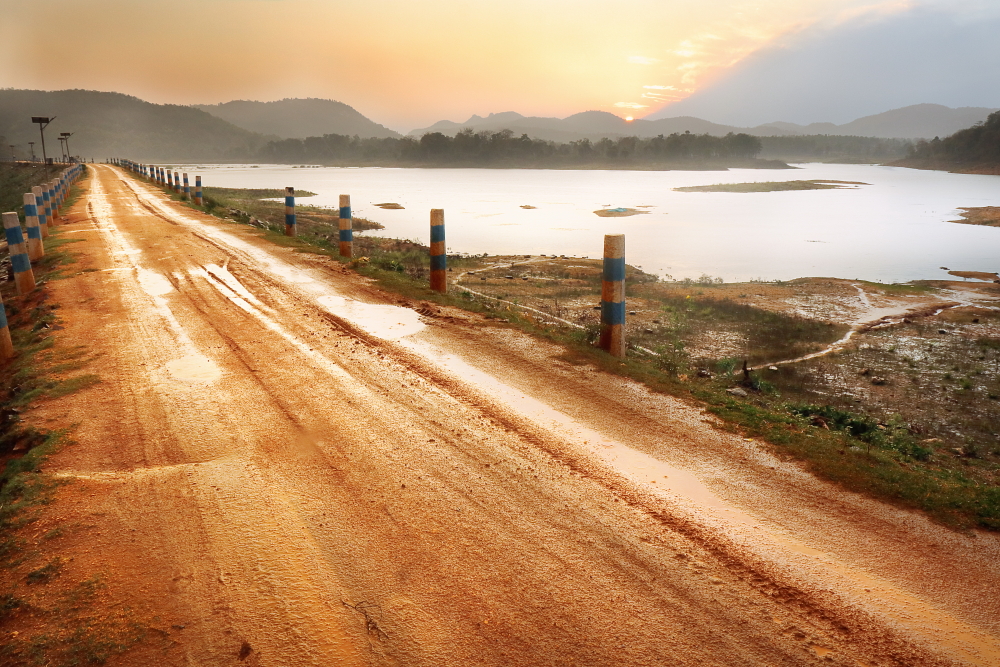
Day 2
On day 2, we visited places around Baghmundi and Balarampur in a full day trip.
PPSP Dams
(Distance from Ajodhya hilltop – Upper Dam is 6km and the Lower Dam is 11 km)
Purulia Pumped Storage Project (PPSP) is a Hydel Power Project in Ayodhya Hills and one of the largest Pumped Storage Plants of India, which starts functioning in the year 2008. The main structure of this project is two rock-fill dams created to store water. These are called Upper Dam and Lower Dam. They are situated in Baghmundi block and will be on the way to Baghmundi from Ayodhya hilltop.
You can also visit Lohria Dam and Turga dam right at the foothills of PPSP dams. Lohria Shiv Temple is another place where tourists often pay a visit while going to Baghmundi.
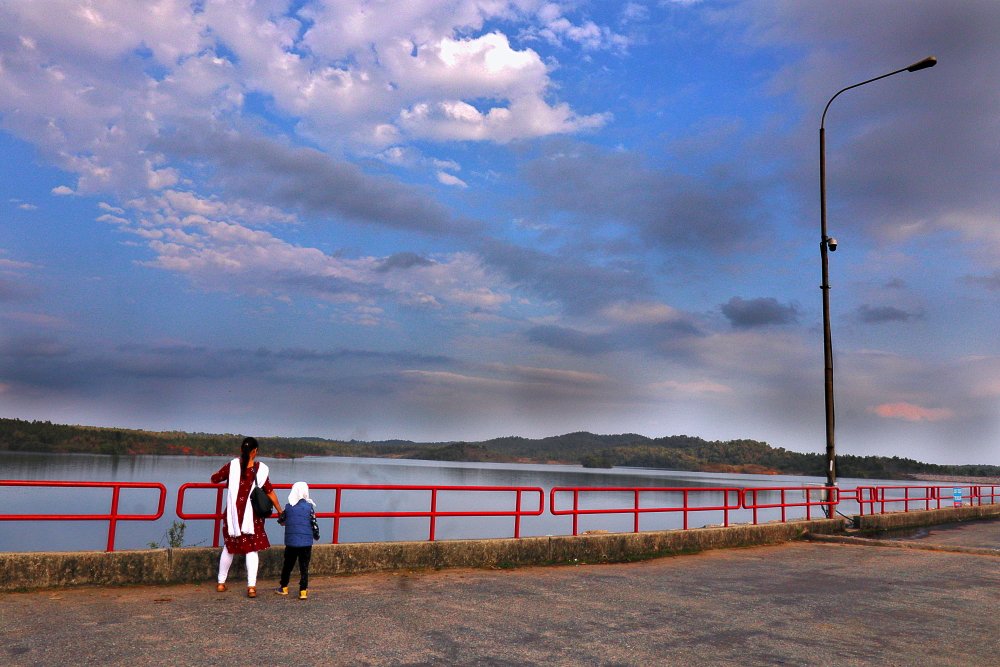
Charidah Village
(Distance from Ajodhya hill top – 16 km)
Charidah is the village of Chau mask makers. The colourful and vibrant masks portraying animal faces or characters from the epics are made by hundreds of families from this village. There are many roadside workshops of artists where tourists can witness the tedious task of making these masks. Tourists can also purchase these masks directly from these workshops.
The tradition of Chau mask-making started in Charida about 150 years back during the rule of King Madan Mohan Singh Deo of Baghmundi. It was popularised by Gambhir Singh Mura, who was a famous Chau dancer and Padmasree awardee. The Chhau mask of Purulia is registered in the List of Geographical Indications in India.
Chau mask makers categorised these masks into two types – masks used for Chau Dance and masks used for home decors. Each mask takes between two to seven days to be completed and involves five elaborate processes. Charidah can be rightly termed as an ‘artisans’ village’ as around 500 families earn their livelihood by making these masks.

Khairabera Lake
(Distance from Ajodhya hill top – 25 km)
Khairabera Lake is another pristine lake at the foot of Chamtaburu Hill built as a part of Khairabera Irrigation Dam. The narrow road goes through the beautiful villages of Bukadi and Barda, with agricultural lands on both sides.
There is one resort beside this lake where one can stay in a cottage or a tent. Nature walk, hiking, kayaking, angling in the lake and cycling along the village roads are some activities offered by this resort.

Matha Forest and Sonakupi village
(Distance from Ajodhya hill top – 20 km)
Matha Forest is on the way to Balarampur. Matha Conserved Forest is at the foothill of Mathaburu (Matha Hill) and is popular among campers and climbers. WBFDC bungalow is a good place to stay here.
Sonakupi village is at the foothill of Kukuburu hill and has a beautiful camping facility to enjoy the ardent nature.
Pakhi Pahar
(Distance from Ajodhya hill top – 27 km)
“Murraburu hill” is popularly known as Pakhi Pahar. The reason for being called so is the sculpture of different birds chiselled over the rock face of Murraburu hill by a motivated veteran sculptor Chitta Dey and his team.
For the past three decades, this man had been relentlessly sculpting birds’ images over this hillock, making it a giant piece of bas relief. It becomes a popular tourist attraction nowadays. He started with few local youths by training them in rock sculpture and rock painting and running a school to educate and train more youths to make a sustainable way of living.
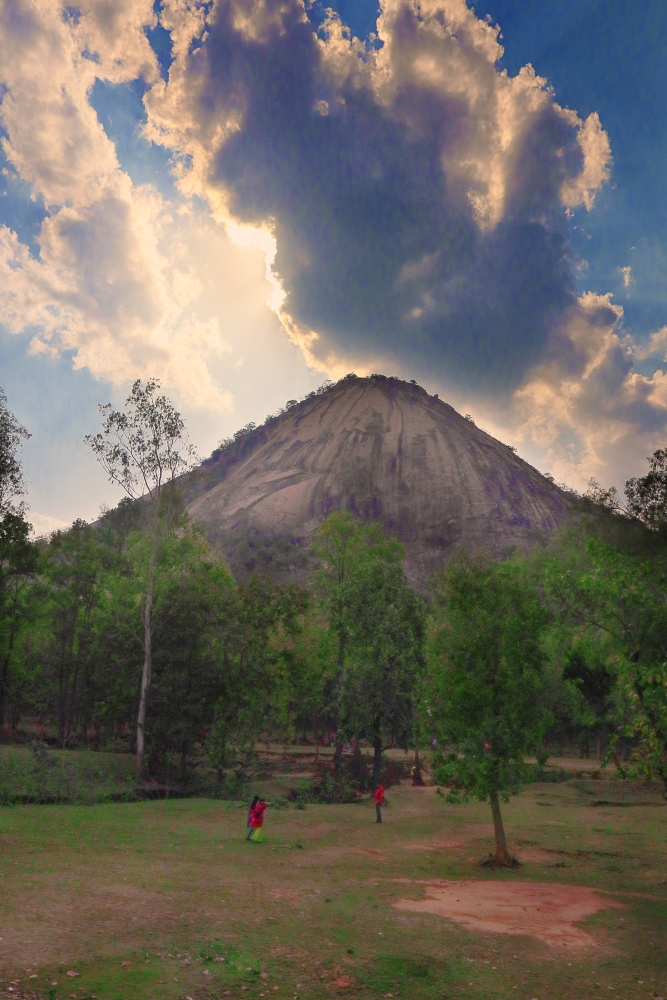
Pardi Dam
(Distance from Ajodhya hill top – 35 km)
Pardi Dam was our last destination for Day 2. The road goes through Pardi village and ends at Pardi Dam, another irrigation dam built on the Kathaljhuri river.
Hills surround this dam on three sides, and the reflection of the hills over the calm water of the Pardi Lake just before the day ends purely magical. Pardi Dam is one of the best secret tourist destinations on your trip to Ayodhya Hills in Purulia.

Day 3
Today we woke up at 4:30 and started our journey to Usuldungri for sunrise. Thereafter we went to Bamni Falls and Turga Falls, followed by a visit to the nearby villages. Lastly, we went to Deulghata to see the twelfth-century temples while driving back to Purulia.
Usuldungri Sunrise View Point
(Distance from Ajodhya hill top – 12 km)
The sunrise from Usuldungri was one of the best sunrises I had ever experienced in my life. There is one watchtower at the top of this hill from where you can get an unforgettable view of Ayodhya Pahar when the dawn breaks.

Bamni Falls
(Distance from Ajodhya hill top – 7 km)
In the midst of a forest, we saw a gush of silky smooth water cascade coming down along the rock face. To reach Bamni falls, the most spectacular of all the waterfalls we saw on our trip to Ayodhya Hills in Purulia, we had to descend almost 100 stairs from the main road.
It is one of the most visited places by locals also. The stairs go down between the long rows of small souvenir shops, making it apparent how popular this place is. The best time to visit this waterfall is during the monsoon when it is full of water.

Turga Falls
(Distance from Ajodhya hill top – 10 km)
Turga Falls is another beautiful waterfall that joins Turga Dam eventually. One has to hike down from the main road to reach this waterfall. The path was not so well laid like Bamni Falls, but the effort to reach there was worth doing.
The water is clean, pure and unpolluted. It flows swiftly over weathered rocks and thick moss. Below the bed of rocks lies a small pool. Turga Falls comes on your way to Bagmundi from Ayodhya Pahar.
Deulghata Temples
(Distance from Ajodhya hill top – 33 km)
Deulghata is another secret destination in Purulia. It has a connection to the Jain settlement in Bengal during the Sena Empire in the 11th and 12th centuries. At that time, approximately 15 temples were built with bricks in traditional “Rekh Deul” architecture (a tall building with a shape of sugarloaf, looking like a Shikhara covering and protecting the sanctum or Garbhagriha). Examples of such dilapidated deuls are still standing in some other parts of Bengal.
Read more: Deulghata Temples in Purulia
In 1864–65, E.T. Dalton, the Commissioner of Chhotanagpur, visited this place and found three large temples in the midst of the ruins of many more on the bank of the Kansai river. Today only two brick temples remained in Deulghata; 3rd one collapsed in 2002. The stucco decoration over the remaining two deuls is in bad shape and needs immediate preservation.
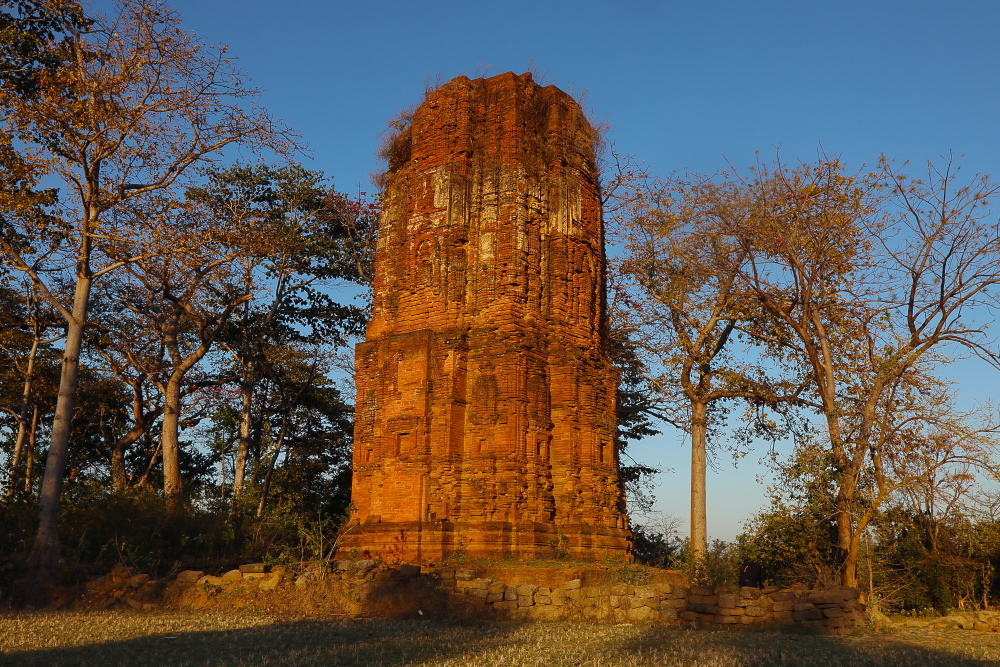
Trekking / Rock climbing in Ayodhya Hills (অযোধ্যা পাহাড়) in Purulia
Mathaburu (Matha Hill) is very popular among trekkers and rock climbers. Many trekkers associations organise basic rock climbing courses here for beginners. Gajaburu is another hillock where one can go for a basic rock-climbing opportunity from Sirkabad, the base camp for this trekking route.
Trekking to “Dowry Khal” is another popular destination among hikers and trekkers. It is a 4-6 hours round trip hike in Ayodhya Hills. Dowry Khal is the originating place of the Shobha river, a tributary of Subarnarekha.
Angling in Ayodhya Hills (অযোধ্যা পাহাড়) in Purulia
Khairabera Lake and Tarpania Lake (Marble Lake) are two places where you can go fishing if you stay in the Ayodhya hills. Murguma lake is also popular for fishing. If you plan to stay in Kushal Palli Resort in Ayodha Pahar, there is a large pond inside the resort property where you can try your fishing skill.
Nature Camp in Ayodhya Hills (অযোধ্যা পাহাড়)in Purulia
Matha is a popular place for nature camping. In winter, many organisations arrange nature camps for young children in the foothills of Ayodhya Pahar.

Village Tour in Ayodhya Hills (অযোধ্যা পাহাড়) in Purulia
Charida is famous for Chau mask making. Apart from that, there are numerous tribal villages in Ayodhya Hills where you can visit tribal lifestyles.
You can stop in small villages on your way to Murguma Lake or take a leisure walk through Usuldungri village after watching the majestic sunrise in Ayodhya Hills. You can stay in Digardi village Homestay to experience rural life. If you are interested in seeing a traditional village market, you can go to “Begunkodar Hat”, which is 5 km ahead of Murguma Lake.
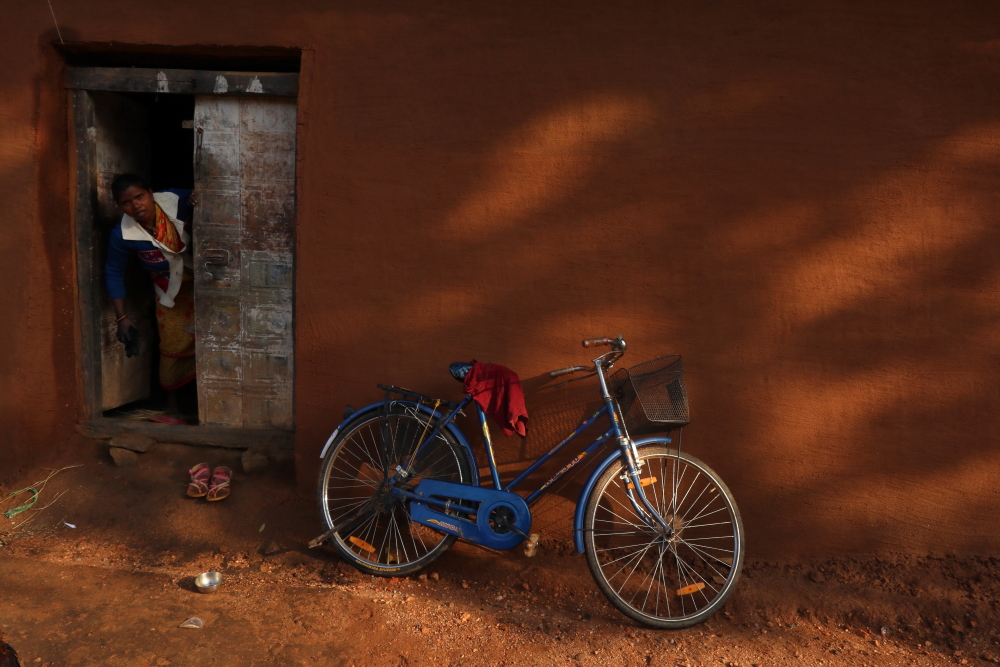
Chau Dance in Ayodhya Hills (অযোধ্যা পাহাড়) in Purulia
Chau Dance is a traditional dance form mixed with martial art and acrobatic movements originating in the eastern part of India. Three types of this dance form are practised in three different districts of West Bengal, Jharkhand and Odisha. In 2010 the Chhau dance was inscribed in UNESCO’s Representative List of the Intangible Cultural Heritage of Humanity.
In West Bengal, Purulia is the only district where Chhau dance is practised. They are usually performed around a theme, based on epics like Ramayana and Mahabharata and other folklores. The use of large masks and vibrant costumes is an exclusive characteristic of the Purulia Chhau Dance.
Music plays an important role to set the mood of this open stage drama. Three main types of folk instruments accompany these performances – Dhol, Shehnai and Dhamsa. Musicians start performing live music 20-30 minutes before the actual dance to set the tune.
Mahisasurmardini is the most common story that Purulia Chau dancers enact. The stories usually are chosen on common propaganda – the power of gods always rising above the power of demons. Each performance usually lasts from 40 minutes to 1 hour. Many acrobatic movements dominate every performance – free swing in the air, side twist, rolling forward and backwards and rampant jumping.

They are held In the villages of Purulia, usually on open grounds, during Gajan Festival in Mid-April or other fairs and festivals. For the last few years, the Government of West Bengal is organising Chau-Jhumur Festival in December to encourage more tourists to visit Purulia and promote this indigenous art form in front of a global audience.
Festivals in Ayodhya Hills (অযোধ্যা পাহাড়) in Purulia
The villages of Purulia celebrates many festivals, some of which are specific to one particular tribe. Some of the most prominent and indigenous festivals that are celebrated by the tribes in Purulia are –
- Gajan or Charak Puja – This is celebrated from March to May-end in different parts of the Purulia district.
- Disum Sendra or Sikar Parab – It is a hunting festival celebrated by the Santhal community in the Ayodhya Hills areas. This festival is held in April.
- Bandhna Parab – It is celebrated by most tribes in Purulia. Animals used for farming are worshipped as the god during this festival. Tribal families paint their houses with vibrant colours during this time. This festival is held in October/ November.
- Tushu Parab – This is celebrated by rural women who share their joy, sorrow and experiences with Tusurani (an imaginary character) by making folk songs. Tushu Parab is held during December every year.
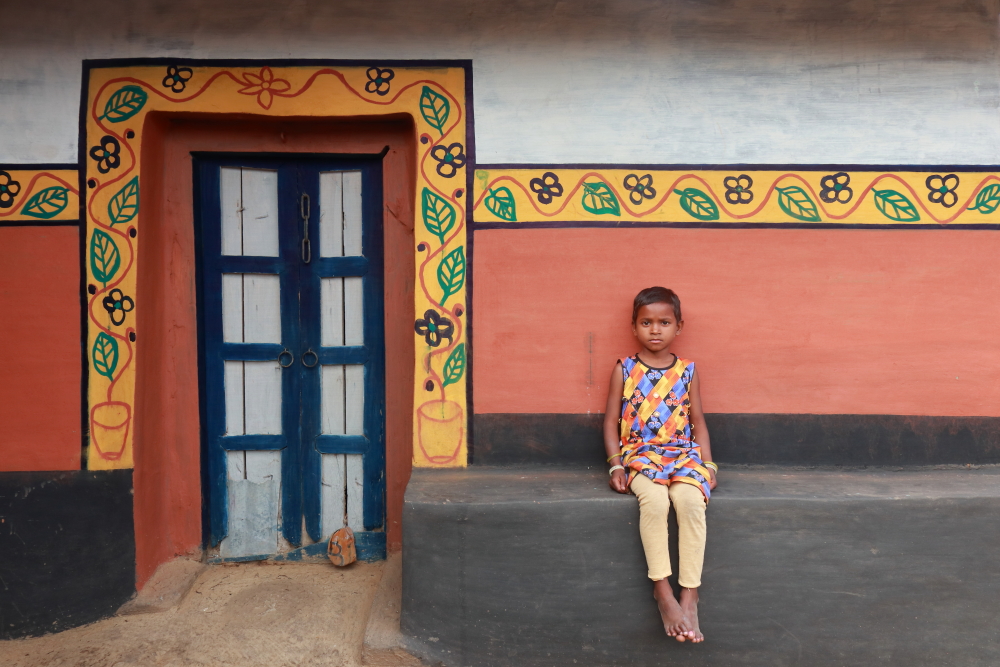
Weather in Ayodhya Hills (অযোধ্যা পাহাড়), Purulia
Winter
Winter is the best time to visit Ayodhya Hills in Purulia. The days are sunny with pleasant temperature, but the nights can be shivering cold. It would be best if you had heavy woollens to counter that.
Being the peak season, hotel prices also shoot up during winter. Trekking, rock climbing, nature camping – all these activities increase from November to January. Chau-Jhumur Festival is also celebrated every year during the month of December.
Monsoon
Monsoon in Purulia lasts from July to September. During this time of the year, days are usually hot and humid, while nights are pleasant and cold. Though rain can hamper your sightseeing, the Ayodhya Pahar look magical during this time.

Hills are covered with shades of green; lakes are full of water, and waterfalls become alive. Trekking and hiking are not recommended during this time, though. Chata Parab and Bhadu are celebrated in this region in the month of September every year.
Summer
Summer in Purulia can be soaring with temperature, particularly during the daytime. Nights can be pleasant, though. It is better to avoid travel here in May and June.
During Spring (March and April), you can visit Ayodhya Hills. Although the weather in Ayodhya Pahar is hot and humid, this is also the best time to see Palash in full bloom. Hotel deals are a steal too. But you have to take precautions to save yourself from the mid-day heat. Use cap and sunglass and drink lots of water to maintain adequate hydration.

Accommodation in Ayodhya Hills (অযোধ্যা পাহাড়), Purulia
You can stay in many places in and around Ayodhya Hills to complete your trip to this circuit. You can stay in Ayodhya hilltop, in the plains of Baghmundi or Jhalda and beside Murguma Lake or Khairabera Dam. For a rustic village experience, you can stay at Digardi village or in Sonakupi village also. If you are interested in trekking and nature camping, I suggest staying near Mathaburu (Matha Hill).
During peak season and festivals like Durgapuja, Christmas and Holi, you may find all hotels and resorts in the above locations are completely booked. In that scenario, you can stay at Purulia Town and tour Ajodhya Hill from there.
Ayodhya Hilltop Hotels and Resort
There are many lodges and hotels in the Ayodhya Pahar circuit, but they are scattered in different locations. You can book accommodation in any of these places and start exploring other sightseeing points by hiring a private cab. But you must book your accommodation first during the Palash-bloom season before finalising your Ayodhya Hills tour plan.
- Kushal Palli Resort – It is the best accommodation available on Ayodhya hilltop at present. It’s a 4-star resort with beautiful cottages, a swimming pool, a big lawn and a pond in the backwards for fishing and boating. The only thing that I missed there was authentic Bengali cuisine which they should look after.
- Hotel Akash Hilltop – Another decent hotel in Ayodhya hilltop with the best view rooms and nice Bengali food.
- CADC Lodge: Niharika/Malabika – These are two lodges on the Ayodhya hilltop, easily accessible from the main market area. Both of them are located in the same compound. It has an in-house restaurant and lots of open space. Both of these facilities are run by CADC (West Bengal Comprehensive Area Development Corporation).
- Youth Hostel – This is another nice place to stay, especially for budget travellers. It is a little away from the main market and does not has a restaurant inside the hostel.

Hotels in Baghmundi
Hotels in Jhalda
Stay near Muruguma Lake
Stay beside Khairabera Dam
Digardi village stay
Sonakupi village stay
Accommodations near Matha Hill
Hotels in Purulia Town

How to Reach Ayodhya Hills (অযোধ্যা পাহাড়) in Purulia
Rail
Ayodhya hills can be accessed from three sides – Sirkabad, Baghmundi and Jhalda. The nearest stations to reach these three places are Purulia junction, Barabhum and Muri junction, respectively.
The best way to reach Ayodhya hilltop would be to get a cab from Purulia station or a bus from Purulia bus terminus. For Matha, Baghmundi and Khairabera, you should get down at Barabhum station and hire a car from there. And if you are staying at Murguma or Jhalda, then you can also get down at Muri Junction and hire a car from there.
But always remember, all the sightseeing places are merely 20-30 km apart from each other, by maximum distance, and you can easily access them from any of the above three stations. If you are finding it difficult to get a booking to one particular station, which is quite common during peak season, try your luck to get a booking to any of the other two stations.
You may also hop on any train going to Jamshedpur, which is 3 hours drive from Ayodhya hills.

Trains from Howrah to Purulia and Barabhum
- 58011 HWH ADRA CKP/BKSC Passenger
- 12865 HWH PRR Lalmati Exp
- 22891 HWH RNC Intercity Exp
- 12883 HWH PRR RupashiBangla Exp (Purulia only)
Trains from Howrah to Muri junction
- 12019 HWH RNC Satabdi Exp
- 18627 HWH RNC Intercity Exp
- 22891 HWH RNC Intercity Exp
- 18615 HWH HTE Kriyajog Exp
Road
Direct buses available from Kolkata to Purulia and Baghmundi. Travel time is 7-8 hours. You can also drive your car from Kolkata, which takes approximately 5-6 hours to reach Ayodhya hills. There are two different routes that you can follow to travel from Kolkata to Ayodhya Hills by road.
Route 1
Kolkata – Dankuni – Arambagh – Bishnupur – Bankura – Purulia
Route 2
Kolkata – Dankuni – Singur – Bardhaman – Durgapur – Ranigunj – Raghunathpur – Purulia

Air
The nearest airport to Ayodhya Hills is Birsa Munda Airport, Ranchi (IXR), at a distance of 110 km. The new Kazi Nazrul Islam Airport, Andal (RDP), is 155 km away. Netaji Subhas Chandra Bose International Airport in Kolkata (CCU) is 330 km from Ayodhya hills.
pin it!!
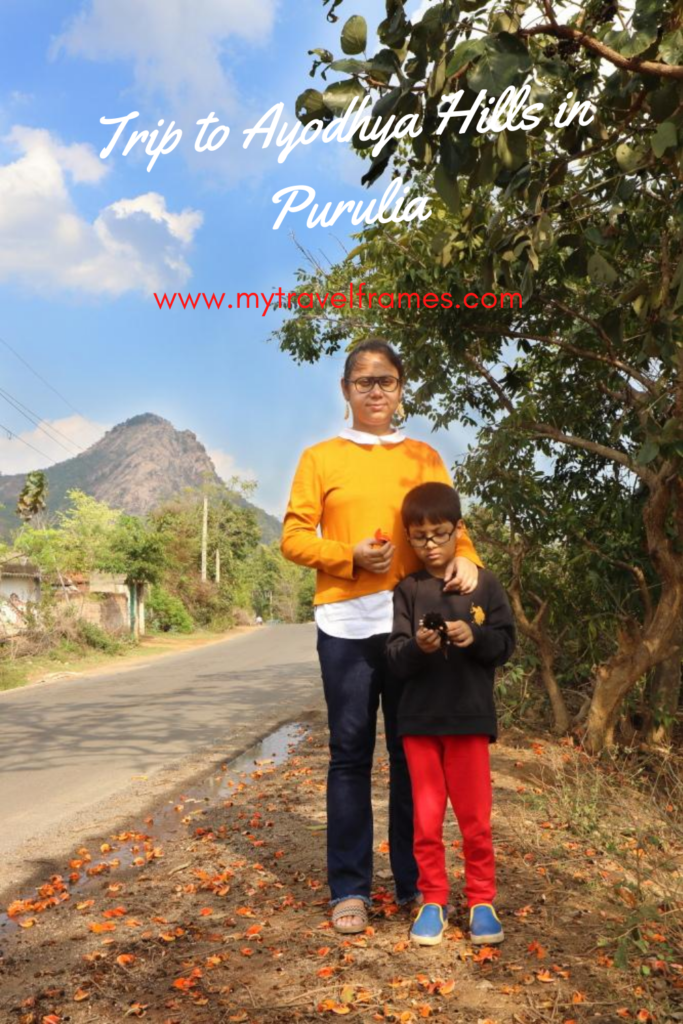

Book your trip: Resources
- Flight
Use Skyscanner or Google Flights to book your flight.
- Accommodation
Tripadvisor and Agoda are perfect for booking your hotel. If you want to stay in a hostel, then Hostelworld would greatly help you find one at your convenience.
- Travel Insurance
World Nomads is perfect for travel insurance. You can get comprehensive protection from them. Let them take care of unexpected situations while you concentrate on your trip.
- Package Tour and Activities
You can book a package tour from G-Adventures and Viator. They are a reputed company arranging small group tours and customising them per your requirements. You can also use Get Your Guide to book your private transport, city tours, heritage walks, food walks and other experiences like a cooking lesson or a Yoga session.
Disclosure: Some of the links below are affiliate links. You will be directed to another third-party website when you click those links. If you purchase anything via those links, I will earn a referral bonus without any extra cost to you.
